5 spunky alternatives to the Meyers Manx dune buggy
Anyone who has ever thought about buying a 1960s- or ’70s-era dune buggy eventually learns the well-traveled history of Bruce Meyers and the Meyers Manx. It is, unquestionably, the gold standard of dune buggies and the uniquely American original over which collectors obsess. Countless pages are devoted to its history, its development, and its eventual downfall thanks to Meyers’ losing a patent case against one of the larger companies that pilfered his design.
If you’re a collector of means and your focus is on originality, the Manx is the dune buggy to have. But what about the rest of us? The ordinary Joes and Janes who love the idea of a dune buggy, have less than ten grand to spend, and want to experience a bit of the dune buggy fever that infected the nation for a few short years into the 1970s?
First, let’s cover the Manx spin-offs.

Fifty years have passed since Bruce Meyers lost that patent lawsuit. Buying a copy of his creation in 2020 won’t take money out of his pocket. Spend some time searching for dune buggies, and you’ll quickly find his name scrawled on the dashboard of some impressive copies, as if each were his personal Manx. If Meyers has found some peace with the phenomenon, the rest of us probably should too, and simply enjoy these copies for what they are.
The good copies, anyway. For every relatively faithful Manx-style buggy, there are a dozen versions that either attempt to improve on perfection or get the concept flat-out wrong. Dune buggy bodies are like guitars. We’re willing to accept about five electric guitar shapes: Telecaster, Stratocaster, Les Paul, ES-335, and the Gibson SG. Beyond those, a guitar shape immediately relegates you to a certain category; you don’t play a Flying V in a rockabilly band.
Marketplace
Buy and sell classics with confidence
Dune buggy culture reflects the same story. We’re willing to live with a few shapes that hew pretty closely to the original Meyers Manx formula. Given the opportunity, though, the companies that laid up these fiberglass buggy bodies began to lose the plot. They concocted buggies that looked like Porsches and ’50 Fords. They made full-length models that could never fit on a Beetle pan. Meyers himself designed the Meyers Manx SR-2, but it never caught on the way the original Manx did.

If you’re in the market, searching through Craigslist and Facebook Marketplace, how do you separate the wheat from the chaff? It can seem as if every sizeable town had a company squeezing out dune buggy bodies in the ’60s—how does a buyer today figure out which ones are any good?
Here are five dune buggies from the ’60s and ’70s to clarify a bit of their history and evaluate the appeal of each design. In their own way, each of these evolutions can be as interesting as the original Manx.
Dearborn Automobile Company Deserter

The appeal of the Dearborn Automotive Deserter rivals that of the Meyers Manx. Dearborn Automotive was located in Marblehead, Massachusetts, not far from Plum Island where it was, at one point, permissible to drive on the beach. Dearborn Automobile Company (later known as Autodynamics Corporation) was in business in the prime years of dune-buggy history: 1968–74. DAC laid up a lightweight fiberglass body and designed it to fit a short VW floorpan and running gear. The Deserter was available in two kit-car configurations: the S1 and the GT. The S1 was the more conventional beach buggy of the two, an acceptable dune-buggy shape with no roof.
The GT, on the other hand, featured full sidepods that covered the fiberglass sidewalls, a hard roof with gullwing doors, a covered engine bay, glassed-in headlamps, and heat. Autodynamics marketed the GT as a real car, one capable of being driven even in New England winters. Of all the dune buggy hardtops we’ve seen, these roofed GTs are the most appealing and the most true to dune-buggy character.

Autodynamics also released a third vehicle, the Deserter GS. Unlike the other two models, the GS was comprised of a tube chassis mated to a fiberglass floor pan which would mate either to the GT or to the S1 body. The engine and transmission were flipped around so that the GS was a true mid-engine car, able to make the most of a six-cylinder plucked from either a Corvair or a 911.
Want to learn more about the Dearborn Automobile Company, Autodynamics, and the Deserters? Check out this site.
EMPI Imp

The EMPI Imp, with its robust following, is well-established among Manx-esque dune buggies. The Imp came from EMPI—an acronym for Engineered Motor Products, Inc.—the company that became synonymous with the VW aftermarket since the mid-1950s. Its buggy was a similar design to the Manx, but EMPI chopped only 12 inches off the Beetle’s floorpan, which allowed for a bit more interior room. (The Manx took off an additional two and a quarter, shortening the Beetle’s base by 14 1/4 inches total.) EMPI built five different configurations, including a four-seat Imp, in its facility stationed in Riverside, California. EMPI sold the Imp through its catalog both as a kit and as a complete vehicle.
Legitimate EMPI Imps can wear body tags and emblems that signify their lineage, but, like most of these buggies, they were built in surfers’ garages, not on assembly lines; even authentic examples may be badgeless. An Imp can be distinguished by its hood, front fenders, and swooping beltline. Imps also had full sidepods, but because they’re removable and came optional in the catalog, the buggy you’re investigating may not include them.
Sears Rascal

By 1970, Sears, Roebuck & Co. had jumped into the dune buggy market with both feet, never missing an opportunity to make a buck when trends became too big to ignore. The 1970 Sears automotive catalog calls out dune buggies on its cover and dedicates three pages to its offering. The Sears Body Kit—known in later catalogs as the Sears Rascal—carried a list price of $329 and came with body, hood, windshield and frame, headlamps, and instructions. The kit was available in five carnival-worthy colors. Two pages of accessories included roll bars, nerf bars, a tow bar, a soft top, and trumpet exhaust headers, not to mention a plethora of seats and steering wheels.
Sears leveraged a massive network of top-quality suppliers and often used multiple vendors to keep shipping costs at a minimum: B.F. Meyers shipped an initial batch of Manx bodies to Sears to be sold as the Rascal, and Terra Buggy shipped Coyote bodies under the Sears aegis.
Kellison Sandpiper

Kellison, Inc. was involved in the serious business of hand-built sports cars before the dune-buggy craze arrived. The company built tube chassis that were designed to accept Italian-esque roadster and coupe bodies, an effort that resulted in the J-4, the J-5, and the Astra X-300 GT. These were real pedigreed sports cars, and they remain desirable today.
Still, the allure of selling a cheap buggy a VW pan was too great to ignore. Kellison produced the Sandpiper in four different configurations: the Sandpiper Roadster (your basic Manx copy), the XP-1, the Sandpiper Pickup, and the GT-40K—“the wildest GT body yet, designed to fit a VW chassis.”
Kellison’s true strength lay in its distribution network. From Alabama to Washington, Kellison had local representatives who could sell you a kit that you could begin building that weekend.
Hunter Sand Tiger

The Hunter Sand Tiger was another dune buggy manufacturer producing bodies in Massachusetts in what was then known as Cochituate, which is now part of the town of Wayland. The Sand Tiger was the brainchild of Carleton “Carl” Carpenter, who was originally a Volkswagen salesman at nearby retailer in Brookline, Massachusetts.
Carpenter went on to found Auto Racing Equipment Company at his parents’ farm in Wayland, and grew it to become one of the top five racing equipment companies in the country in the 1960s. He used that company as the springboard to develop Fiberglass Engineering Company, which produced the Hunter Sand Tiger. Carpenter received some significant press in October of 1969 when Sport Buggies magazine featured the Sand Tiger that he delivered to Charlie Long, a guard with the AFL’s Boston Patriots from 1961 to 1969.
If one of these dune buggies doesn’t strike your fancy, there are scores of other examples that may. From the Allison Daytona to the Woodford El Lobo, there’s a dune buggy out there in any configuration you may desire. Check out DunebuggyArchives.com for a complete list of manufacturers and identifying characteristics. It can be a huge help if you’re trying to identify a dune buggy for sale.
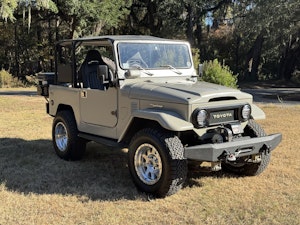
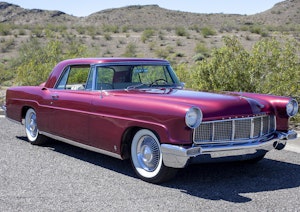
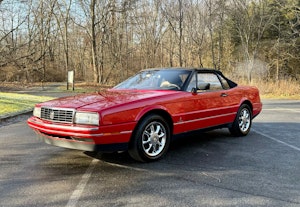
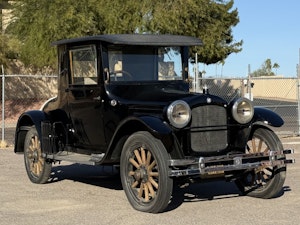
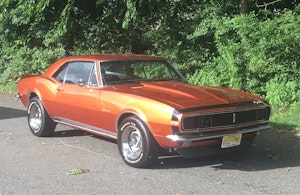


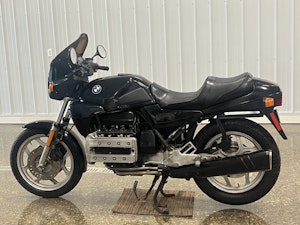















I purchased a Sears Rascal dune buggies a few years ago from a neibor. It was titled in Ohio as a 1966. It was purple metal flake. It had the Rascal emblem on the front. I disassembled it and rebuilt the pan. The body he’d cracks in the fiberglass and was restored. I currently have all the pieces to put it back together but haven’t found the time to start yet.